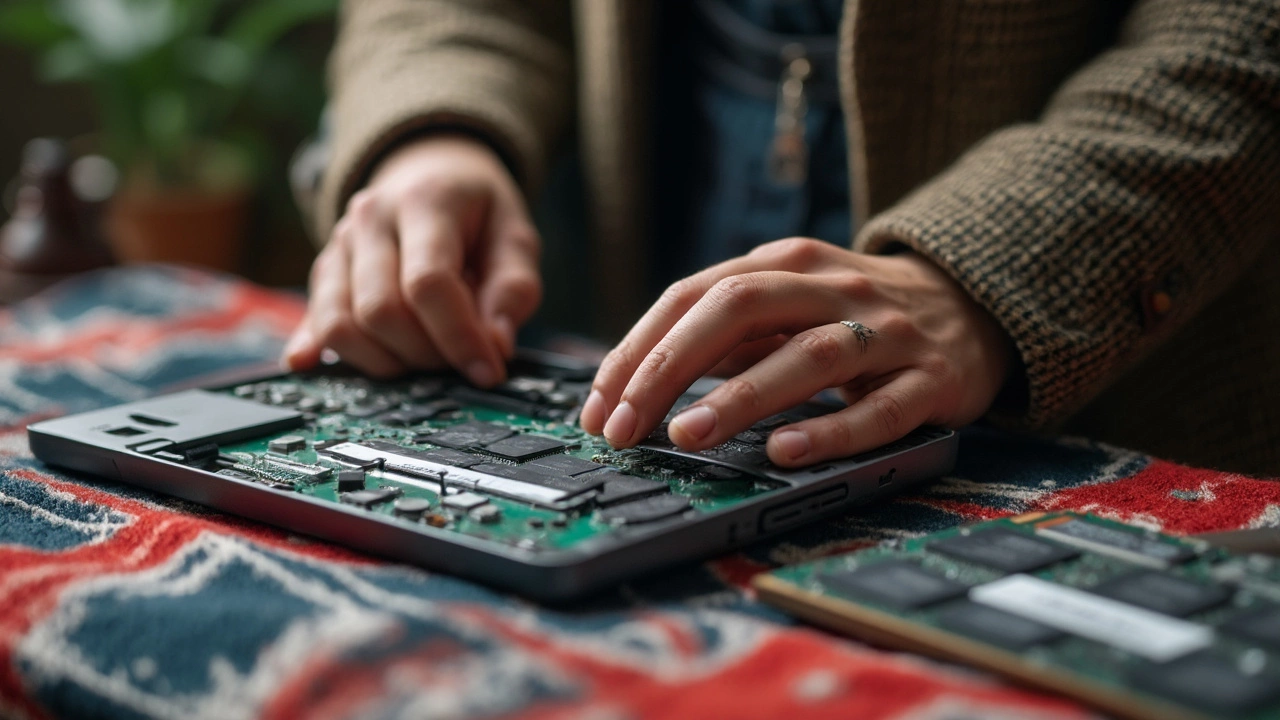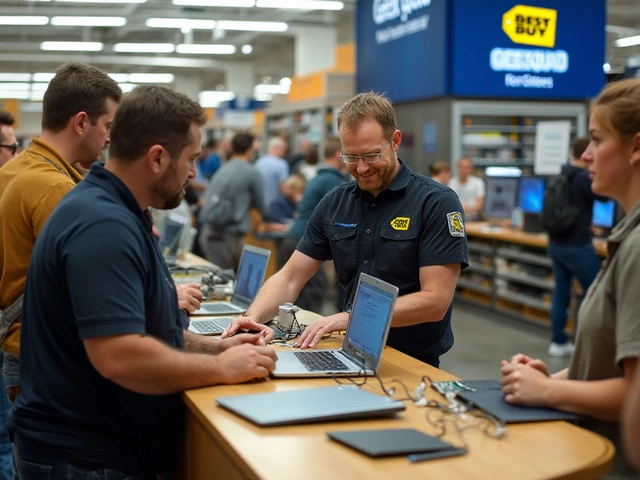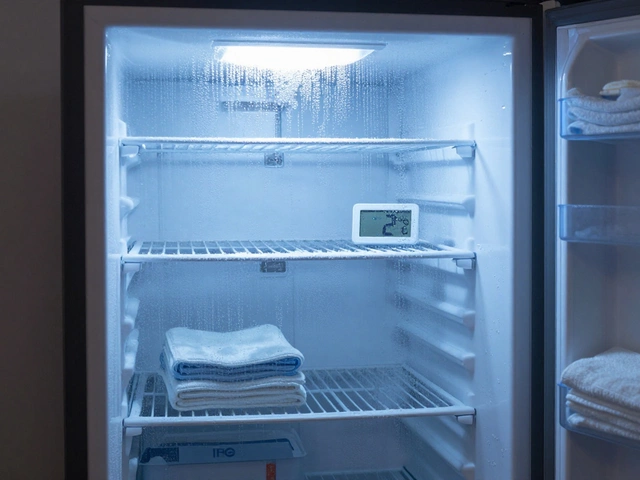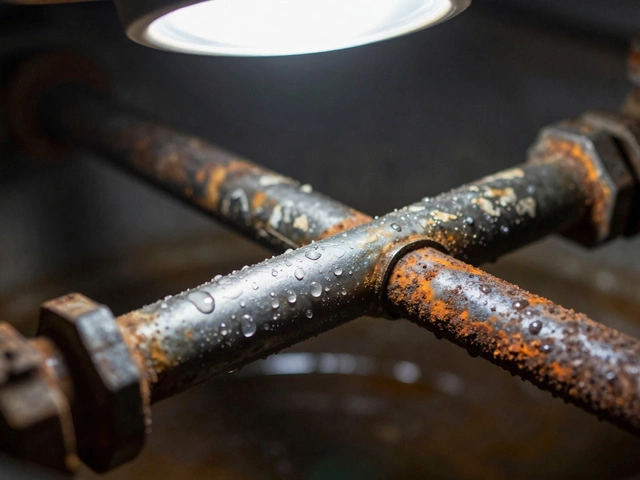Ever looked at your old laptop and wondered if it's still got any life left in it? With so many shiny new gadgets hitting the shelves, it’s easy to feel like your decade-old machine’s better days are behind it. Let’s see if we can shed some light on whether holding on to that trusty old laptop makes sense or if it’s finally time to bid it farewell.
First things first: check its physical condition. Are the keys sticky or the screen cracked? If it's more duck-taped than actual laptop, it might not be worth much hassle. But if it’s only a bit worn and still functions without major glitches, there's potential there. The inside matters too—if your laptop is slower than a snail on a lazy day, a few small upgrades can work wonders.
Consider what you need from a computer nowadays. Basic tasks like browsing the web, streaming videos, or writing documents don’t require the latest tech. So, if your needs are simple, your old laptop might already do the trick. You might just need to maximize what you've got.
- Assessing the Condition
- Performance vs. Modern Tasks
- Upgrades to Consider
- Cost vs. Benefit Analysis
- Emotional and Practical Value
- When to Finally Let Go
Assessing the Condition
So, you're staring at your old laptop, and you're asking yourself if it's worth the hassle to keep around. Before jumping to conclusions, let's take a closer look at what you've got. Catching issues early can make a significant difference, and honestly, there's more you can do than you might think.
First, let's break down the basics. Is the laptop in one piece? Check for external wear and tear—cracked screens, busted hinges, missing keys, and all that jazz. If the frame is falling apart, it might need more love than it's worth.
If the outer shell looks decent, dig a little deeper. Boot it up. Does it take an eternity to start? Slow boot times can often be fixed, but they might also indicate deeper issues like a failing hard drive. Consider upgrading to an SSD if performance lags are your biggest pain.
- Battery Life: Is it holding a charge? If you're tethered to the wall socket, a new battery could do wonders. Replacement batteries aren't terribly expensive and can give your device a new lease on life.
- Heat Levels: How hot does it get after being on for a while? If it heats up quickly, it might just need a good cleaning. Dust build-up inside can throttle performance.
- Sound and Display: Are the speakers working? Is the screen starting to flicker or show dead pixels? Sometimes these are annoyances more than deal-breakers, but they can also increase the repair bill.
- Operating System: Can your laptop handle the latest updates? Some older systems might struggle with new software. A lightweight operating system could be an alternative to consider if it can't keep up.
By directly assessing these areas, you can get a clearer picture of your laptop's repair needs. It helps to balance what’s worth fixing and when it might be time to throw in the towel.
Performance vs. Modern Tasks
You might think a 10-year-old laptop is like trying to race an ancient horse against a sports car, but it all boils down to what you're asking it to do. If you’re just looking to browse Facebook or watch cat videos, old isn't code for useless.
For basic tasks, many older laptops can still hold their ground. They generally handle web browsing, sending emails, or streaming videos without much fuss. What about software? Well, that's a different story. Older laptops often struggle with the latest software, especially anything to do with graphic design or gaming. That's because these programs are designed with modern hardware in mind.
In a study by TechRadar, it was found that around 40% of laptop owners were happy using computers older than 5 years for tasks like browsing and word processing. They quoted,
"While older laptops might be slower, for many users they still fulfill their needs without requiring an upgrade.”So, if your needs aren't too demanding, a few small tweaks might just do it.
Aging laptops often benefit from a solid state drive (SSD) upgrade. It’s like a shot of adrenaline for opening apps and booting up. More RAM can also keep things running smoothly, especially if you have a gazillion tabs open all the time.
| Task | Performance on Old Laptops |
|---|---|
| Browsing the Web | Generally smooth |
| Streaming | Playable in standard quality |
| Running Recent Software | Often slow or incompatible |
So where do you draw the line? If you’re just juggling emails and YouTube videos, your old buddy might still be up for the task. But diving into the latest innovations or software? You might find yourself hitting a wall pretty quickly. Bottom line: know your needs and what your laptop can handle.
Upgrades to Consider
Thinking about giving your old laptop a new lease on life? Sometimes all it needs is a little tech TLC to keep up with today’s demands. Let’s break down some key upgrades you can make that won’t break the bank.
First up, consider swapping out the hard drive. Is your laptop still running on an old-school mechanical HDD? Upgrading to a solid-state drive (SSD) can drastically improve boot times and overall responsiveness. Old laptops tend to come alive after this adjustment, making everything feel a lot snappier.
Next, look at the memory. If your laptop has less than 8GB of RAM, you might need an upgrade, especially if you want to juggle multiple tasks seamlessly. More RAM means less time waiting for your computer to catch up when you’re switching between tabs.
Have you thought about your laptop’s operating system? Laptop repair can sometimes mean simply cleaning house on the software side. Updating to the latest compatible OS version or switching to a lighter Linux distro can improve performance without touching any hardware.
If heat is an issue—and let’s be real, with older machines it often is—consider giving the insides a good cleaning and maybe even replacing the thermal paste. Overheating can throttle performance significantly.
- Tech tip: Check the battery as well! While it might not enhance speed, a new battery can make your laptop portable again, which is kinda the point of a laptop, right?
- Pro-tip: Don’t overlook external accessories. An external mouse or a cooling pad can make a big difference in usability.
These tweaks are typically enough to breathe new life into most old laptops. But if you're finding the costs are creeping too close to what you'd spend on a budget-friendly new laptop, maybe it’s not the best investment. We'll get into that math in the next section!

Cost vs. Benefit Analysis
So, you’re thinking about whether to spend money upgrading that old laptop or just scrap it and get a new one. Let’s break it down so you don’t waste your cash on an impulse buy or upgrades that won’t make a difference.
Here's the deal: If you’re just looking to boost performance slightly, adding more RAM or swapping that clunky old hard drive for a shiny new SSD can be super effective. These upgrades can cost you around $50 to $150, depending on your choice of parts. But remember, these tweaks mainly help you with speed, not brand-new features or intense processing power.
On the flip side, think about what a new laptop would offer. Today’s models come with high-speed processors, eye-popping displays, and battery lives that seem almost forever. Sure, dropping $500 or more sounds steep, but you’re paying for tech that’ll keep pace with new updates and software for years.
Weighing these options comes down to what you really need. Do you just want to surf the web and watch cat videos all day? Then a couple of upgrades are probably all you need. But if you're getting serious about gaming or demanding software, maybe it’s time for a shopping spree.
Laptop repair and upgrade costs can be minor compared to buying new—even if it is tempting to go for the latest model. Assessing your needs and budget realistically helps you make a wise choice, ensuring you don’t overspend on bells and whistles you’ll never use.
Emotional and Practical Value
Sometimes, hanging onto an old device like a 10-year-old laptop is about more than just practicality. Let’s be real: your laptop might have seen you through late-night study sessions, your first freelance gig, or countless video calls with family living far away. These memories add sentimental value that doesn’t come with a price tag.
On a practical level, an older laptop can still serve as a reliable backup. Say your main machine crashes right before a deadline. Having a backup laptop, even an ancient one, can be a lifesaver. Plus, older laptops are less tempting for thieves and often less risky to carry around.
Yet, to make the most of such an old friend, some performance tweaks might be in order. Adding more RAM or switching to a solid-state drive (SSD) can significantly boost speed and efficiency. These upgrades often cost less than a new machine and can make a noticeable difference.
And then there's the eco-friendly aspect. Keeping your trusty machine reduces electronic waste and helps lessen your carbon footprint, which is a win for the planet. Sure, newer models boast flashy features, but if your needs are basic, why not keep using what works?
Deciding whether to keep or let go of your laptop really depends on what you need versus what it's worth to you emotionally. Weighing its emotional heritage against its practical utility should guide your decision.
When to Finally Let Go
Deciding when to part ways with your old laptop can feel a bit like breaking up. You’ve got memories together, but sometimes it’s just gotta happen for your tech health. Here’s how to know when it’s time to move on.
Start by assessing hardware issues. If your laptop’s motherboard is fried or if it's dependent on continuous charging because the battery dies within minutes, you might be looking at more repair bills than it's worth. Yes, replacement parts can sometimes patch things up, but when key components are shot, that's a big hint to let go.
Think about software compatibility, too. If you find yourself struggling to run even moderately new programs, your trusty device might be too outdated. Today's software demands more RAM, more processing power, and newer operating systems. Consider if you can't feasibly upgrade to an OS newer than five years, you're probably missing out on essential security updates and features.
Weigh in on repair costs versus simply buying a new machine. If fixing your device is setting you back more than half the price of a reasonably updated laptop, it makes more sense to go shopping. Spending hundreds on parts for an old machine isn’t always wiser than buying something fresh from the box.
- If your laptop repair bills exceed 50% of a new laptop's cost, consider upgrading.
- Unable to run required software due to outdated operating systems or hardware? Time for a change.
- Significant hardware failures, like a damaged motherboard, often mean it’s not worth saving.
Always consider emotional and practical values. Sentimental reasons can be strong, sure, but practicality often wins. If your laptop frustrates more than it functions, you know what to do. At the end of the day, your tech should make life easier, not harder.









